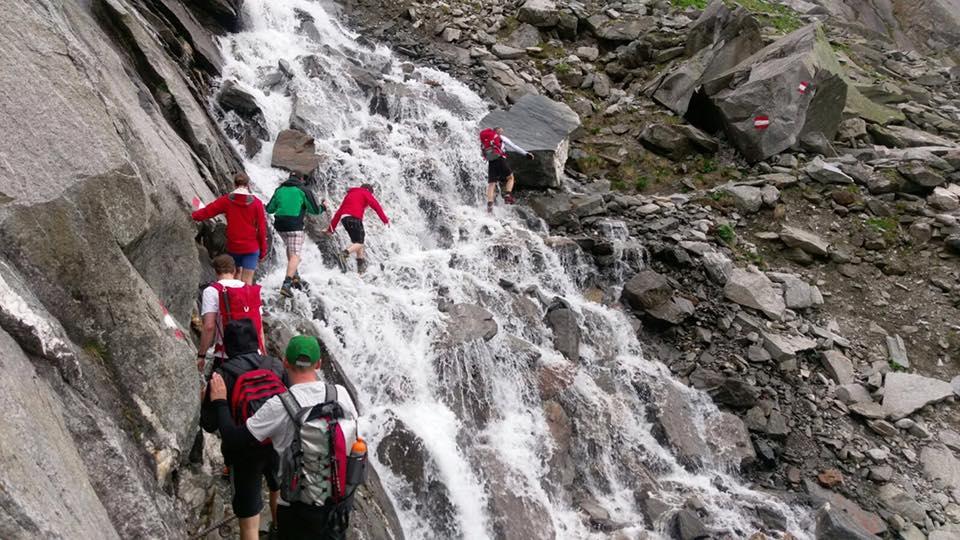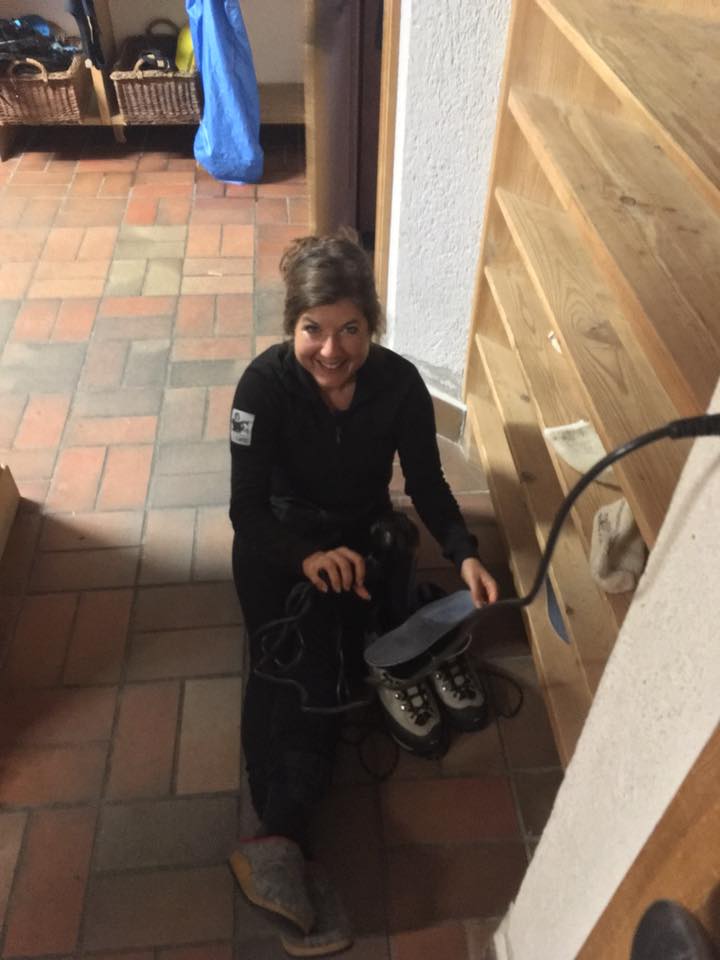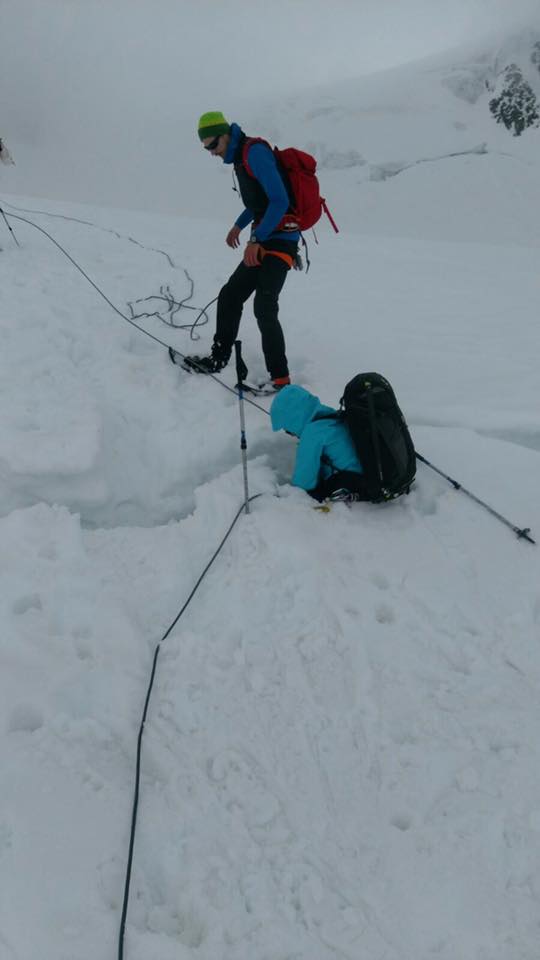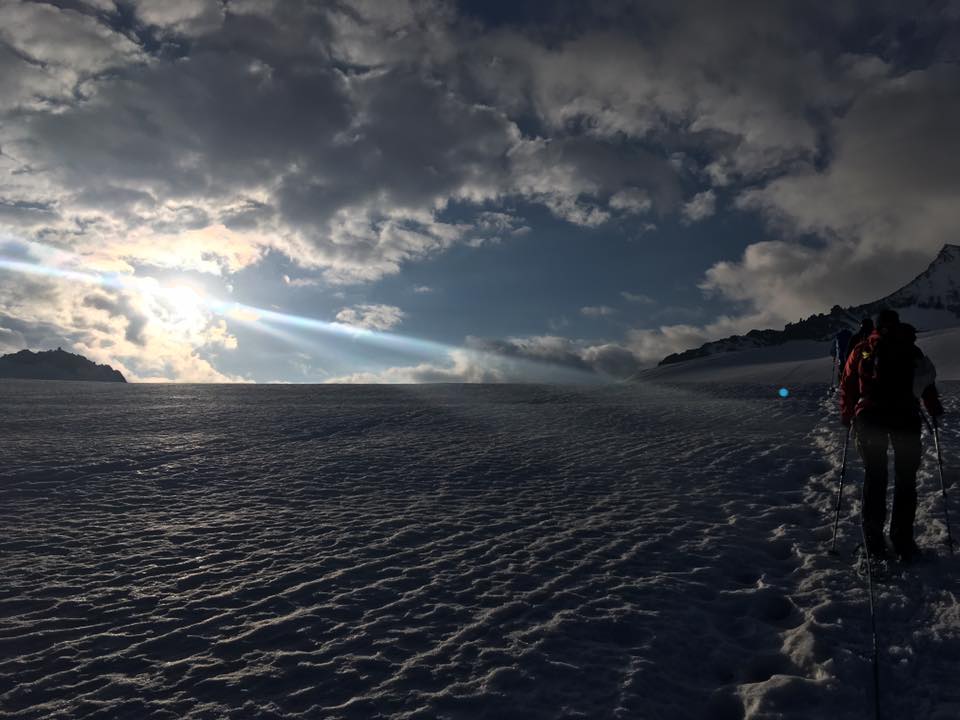I had already climbed above 3000 altitude meters in Kühtai. But I wouldn’t call the ascent of the Sulzkogel (3016 m) in the Kühtai region a “real high-altitude mountain tour”. Apart from the thin air in the upper areas, it was the flair of an ordinary – albeit beautiful – mountain tour. The Großvenediger, however, was a rope team tour over glaciers. The weather god wasn’t particularly good for us during the two-day Großvenediger ascents. Both he and the mountain admonished us to feel awe and not to take the risks of a mountain climb lightly. Although it was not life-threatening for any of the participants, nature showed us some pitfalls.
Meeting point of the tour was the village Neukirchen am Großvenediger at the parking lot Hopffeldboden. Not quite a dozen participants were registered. Frank and Sonja – a very nice couple from Baden-Württemberg – took me by car from Munich. The rest of the participants and our mountain guide Julian from Munich. By taxi we saved ourselves a piece of forest road and drove on through the Obersulzbach valley until we reached the Postalm. From there it was only a few kilometres to the material ropeway where we handed in our snowshoes. Then followed the further ascent to the Kürsinger hut (2558 m), where we had booked overnight stays. The days had been rainy again and again. And a small mountain stream had turned into a real waterfall, which we had to cross. Because of the water we couldn’t see the way and where exactly we could find a stop or where we could step into depressions or the abyss.

At the same time, the source clouds became larger and larger and the danger of thunderstorms increased, which is why we were not allowed to take much time during the crossing. The first lightning and thunder accompanied us as we scurried through the floods. The water ran completely into my boots. The boots had GoreTex coating and so the water could not run out. I stood in the shoe completely in the water. Therefore I took off the shoes and emptied them. Unfortunately they were now completely wet and I swam bad, if I should run the next day with wet shoes over snow and ice. That would not be possible! I didn’t have much time to think about the problem, because suddenly a thunderstorm started. I quickly pulled my rain cover over my backpack before the first hail set in besides the rain. Julian urged us to hurry. When we climbed up, I still thought, not to touch the iron wire. Some participants were in panic. One participant hid temporarily under protruding rocks. The hailstones were really thick and hurt. The hut was now in sight, only a few hundred meters still. Finally everyone made it into the hut undamaged. The wet things were taken off and hung up to dry. My shoes were completely soaked and would never dry until the next morning. Thank God the hut landlord had a hairdryer for me and I could dry my shoes.
The next morning it started before sunrise. The weather was still good, but it should change at noon and bring rain or snowfall. First we went over rocks to the beginning of the glacier. As it had snowed fresh the days before, we did not use crampons for the ascent, but snowshoes. We roped up and marched off. Julian knew the terrain and we circumnavigated the crevasses. Only one crevasse we had to cross. The crack in the glacier was not very wide, but wide enough that one could not make an easy step over it. The back edge was also shifted upwards. So we had to jump over the edge with the snowshoes. The participants in front of me tumbled over the crevice, because they couldn’t keep their balance when the snowshoes came up. When I was at the row I tried to go to the foremost place of the column, however, the edge of the column broke something and I slipped with my snowshoe into the column. The snowshoe wedged and I was stuck with one leg in the crevice. The strong participants tugged at me, but the snowshoe remained stuck. Finally Julian took his stick and knocked the icy snow in the crevice around the snowshoe free. Thank God. It was a queasy feeling to look deep down in the crevice.


The clouds became more and more and we got into their fog during the further ascent. The path became steeper and the air thinner. Finally we reached the ridge. First the ridge was several meters wide, became however with each height meter narrower. Immediately below the summit cross a group member was so afraid that he refused to go on. Julian wanted to encourage the mountaineer to continue because the cross was only 5 meters away, but nothing to do. Since we had to stay together as a group, we turned around with a heavy heart directly under the summit cross and descended again until we were out of the “danger zone”. Since we were completely surrounded by clouds we could only see a few meters and would not have had a view into the landscape on the summit. We took a short break. The first snowflakes fell. We made and immediately to the descent. In the deeper regions the snow changed into snow rain. Furthermore the view was strongly restricted by fog and sleet. But Julian knew the terrain and had a GPS clock for orientation. As we learned later, however, other groups had gotten very lost on this day. Arrived at the lower end of the glacier, we put off rope and snowshoes. Meanwhile it had got to rain heavily and I was very glad about my waterproof clothes. Now it went the stony and rocky way down to the Kürsinger hut. The rocks overgrown with moss were partly very slippery and one ran as on black ice. For my taste some participants went much too fast. Only a wrong kick, a slip and a stupid appearance can have bad consequences. I often have these thoughts when I watch others descend. And indeed it happened. One participant, who was not one of the blue-eyed ones, slipped away on the slippery moss and fell on his side. He broke a rib in the process. Thank God the hut was not far away and he could reach it with support. There we waited until the rain had subsided and started the last part of the descent.


